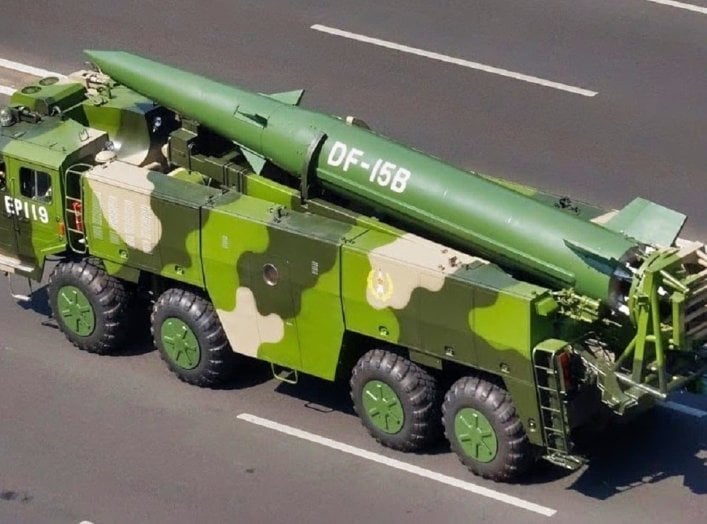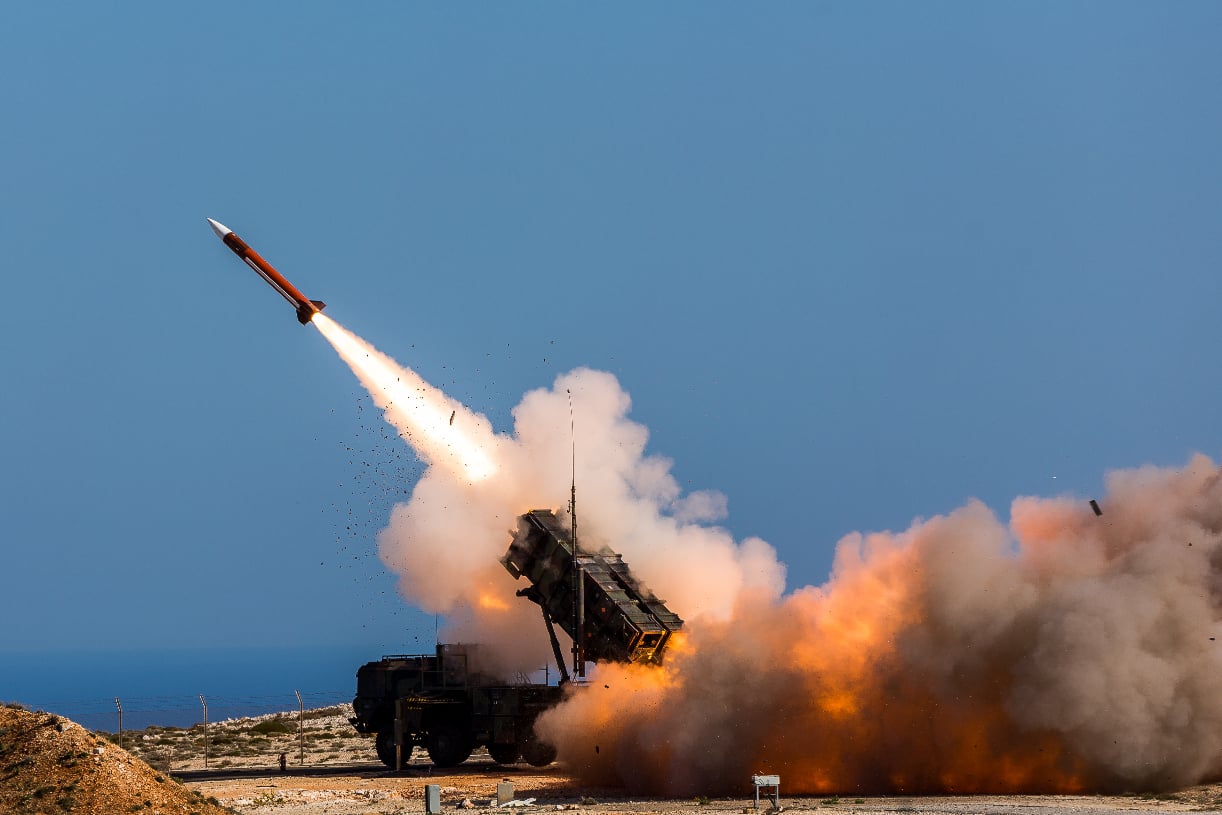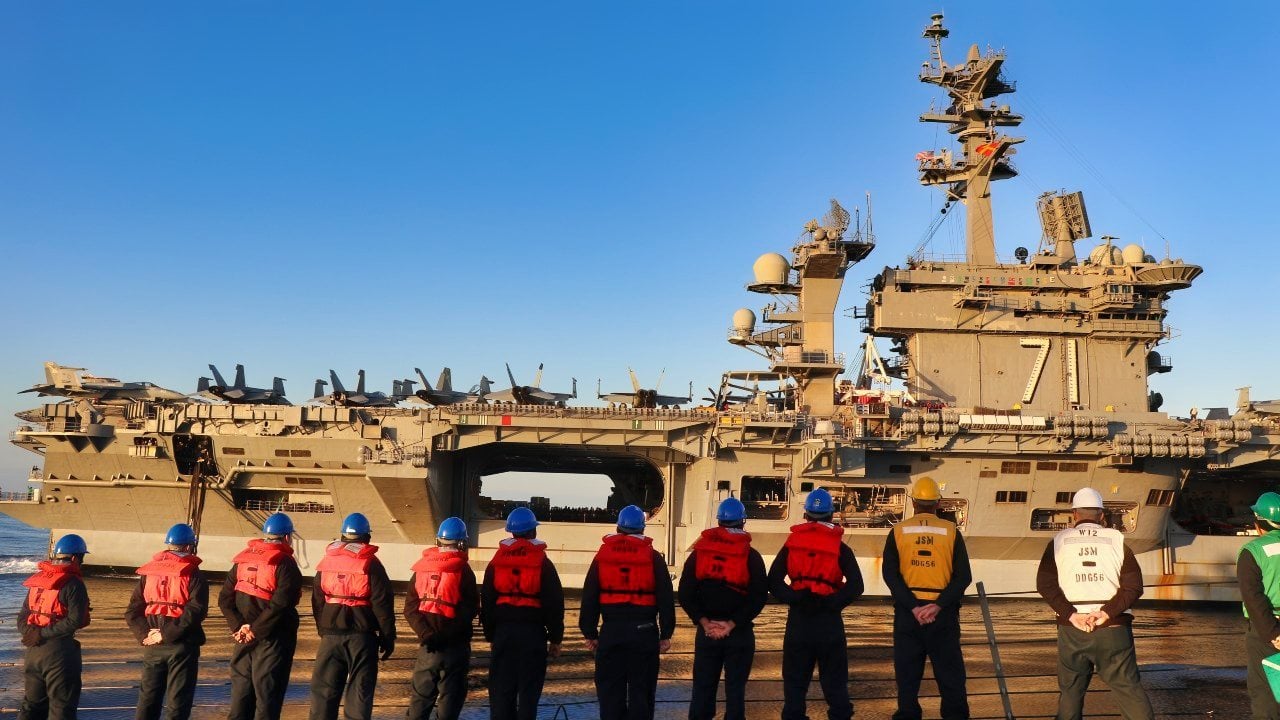China's Missiles Could 'Annihilate' U.S. Military Bases in a War

The United States faces a double-edged sword: it needs to have its forces deployed nearer to China so that it can reliably respond to any provocation by China. Those forces must be large enough to rollback what will be basically a full-court press (militarily speaking) by China.

The United States will be at war soon with the People’s Republic of China (PRC), or at least that’s what many in Washington, D.C. believe. Should such a conflict erupt, given the geographical makeup of the region, the ability for the US military to reliably, quickly respond to any Chinese provocation, say against Taiwan, would be critical.
That is why for many years, the United States has enhanced its force presence in what it now calls the Indo-Pacific.
On social media today, there is a picture of the Earth that has gone viral. It is unlike any other picture of the planet you may have seen. The entire image is blue and along the wee edges of the image are some yellowish bits indicating land. This is an image of the Pacific Ocean side of the Earth. This massive expanse of water is what separates the United States from China.
For the United States to be primed to respond in a timely fashion to any potential Chinese attack—or even a blockade—of Taiwan, the Americans must pre-position the bulk of their forces to bases nearer to China. They must also move their naval assets closer to China.
Geography is Not on America’s Side in the Pacific
The only problem with this strategy is that, given the finite amount of territory upon which to base their air, Marine, and naval assets, they risk turning those regions and warships into easy targets for China’s massive—and growing—missile arsenal.
You see, even though America’s military is more technologically advanced than China’s (though even that cannot be taken for granted in key areas), since any potential conflict with China would be waged closer to their shores, means that America would have to project power across vast distances to stop whatever nefarious goals that China has as it relates to Taiwan.
The United States faces a double-edged sword: it needs to have its forces deployed nearer to China so that it can reliably respond to any provocation by China. Those forces must be large enough to rollback what will be basically a full-court press (militarily speaking) by China.
At the same time, by basing its forces within firing range of China’s massive missile arsenal, Washington is leaving open the serious possibility that the Chinese will be able to basically weaken American forces so much that the Americans couldn’t respond.
This is certainly the Chinese strategy.
Between China’s forward-deployed missiles targeting bases, such as Guam, and China’s large anti-ship ballistic missile arsenals, should China opt to launch a bolt-from-the-blue attack on Taiwan, they will have the advantage over the Americans.
Beijing’s forces would be able to catch the Americans totally by surprise and their long-range missiles could swamp whatever defenses around US military facilities in the Indo-Pacific existed. China’s anti-ship missiles could also prevent the Americans from moving their potent aircraft carriers into the region, meaning China would have free reign.
The Way Forward
A better solution would be to harden US military bases in the region. That process has already been underway for years. The US military needs to make its bases in the region able to withstand as much of a pounding as China’s missile forces can dish out.

Another defensive action American forces can take would be to deploy anti-missile systems, such as Patriot Missiles and Terminal High Altitude Area Defense (THAAD) to US bases in large numbers. These systems have a track record of knocking down incoming ballistic missiles. The point would not be to take out all the missiles.
Given China’s arsenal, that’d be impossible.

Rather, it would be to provide time for US airplanes to get off the ground so that they could continue to be combat effective—at least for a period of time.
But the real important element here, as always when speaking about China, would be the submarine factor. While China possesses capabilities to identify and track US Navy submarines, these platforms are notoriously difficult to accurately track at all times.
By deploying large numbers of these forces to the region, the Americans can ensure that they will have the ability to respond to any threat China poses to Taiwan, irrespective of whether China gets some knock-out blows to US military bases with their missile arsenal.
Submarine Launched Drones Needed
Further, the Navy is developing submarine-launched drones. These systems would be key in any fight against China, especially if China is able to keep the US Navy’s aircraft carriers back, due to fear that these expensive warships could be sunk by China’s anti-ship missiles.

The presence of submarine-launched drones could prove decisive in key surveillance and bombing missions against a Chinese military that has effectively damaged US military bases in the region and deterred US aircraft carriers from entering the region.
The US military cannot take its basing strategy in the region for granted. It must be prepared to lose substantial numbers of its forces before they can even enter any fight against China, thanks to China’s massive missile arsenal. There are some methods for mitigating the threat. Submarines, hardening of bases, and deploying reliable missile defenses are key.
- Questions and Answers
- Opinion
- Motivational and Inspiring Story
- Technology
- Live and Let live
- Focus
- Geopolitics
- Military-Arms/Equipment
- Sicurezza
- Economy
- Beasts of Nations
- Machine Tools-The “Mother Industry”
- Art
- Causes
- Crafts
- Dance
- Drinks
- Film/Movie
- Fitness
- Food
- Giochi
- Gardening
- Health
- Home
- Literature
- Music
- Networking
- Altre informazioni
- Party
- Religion
- Shopping
- Sports
- Theater
- Health and Wellness
- News
- Culture

